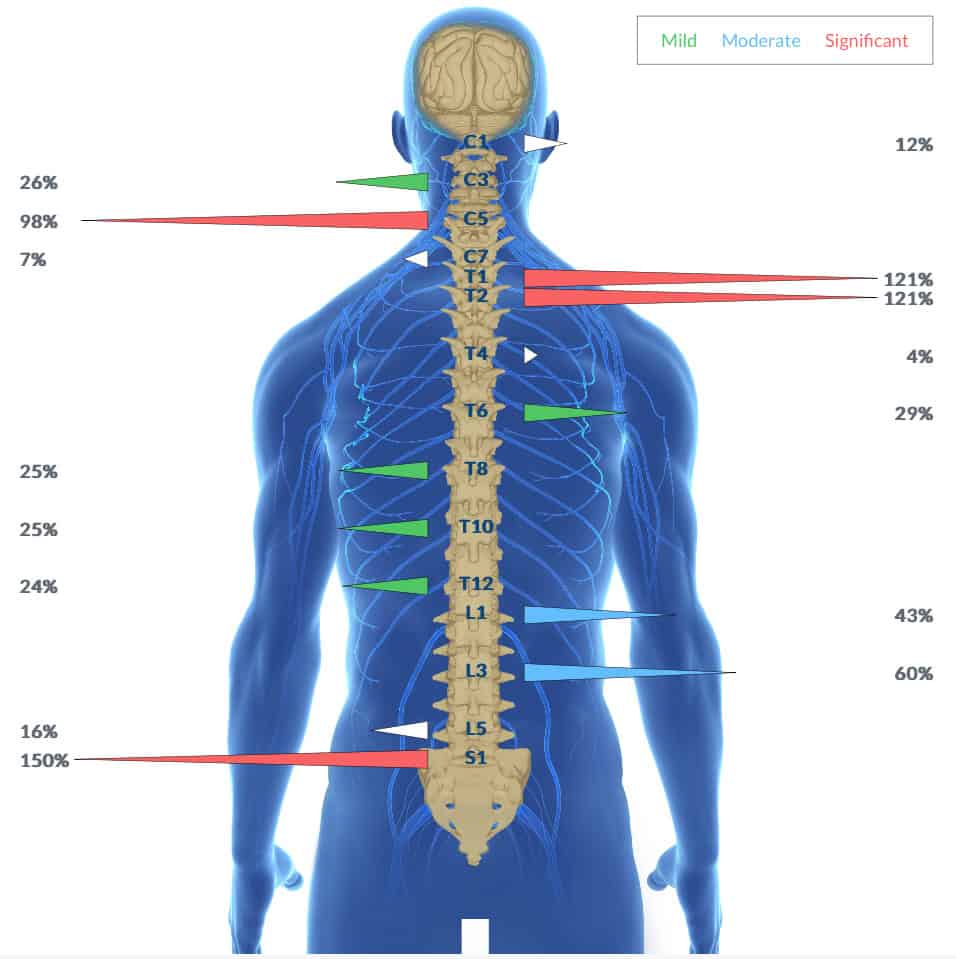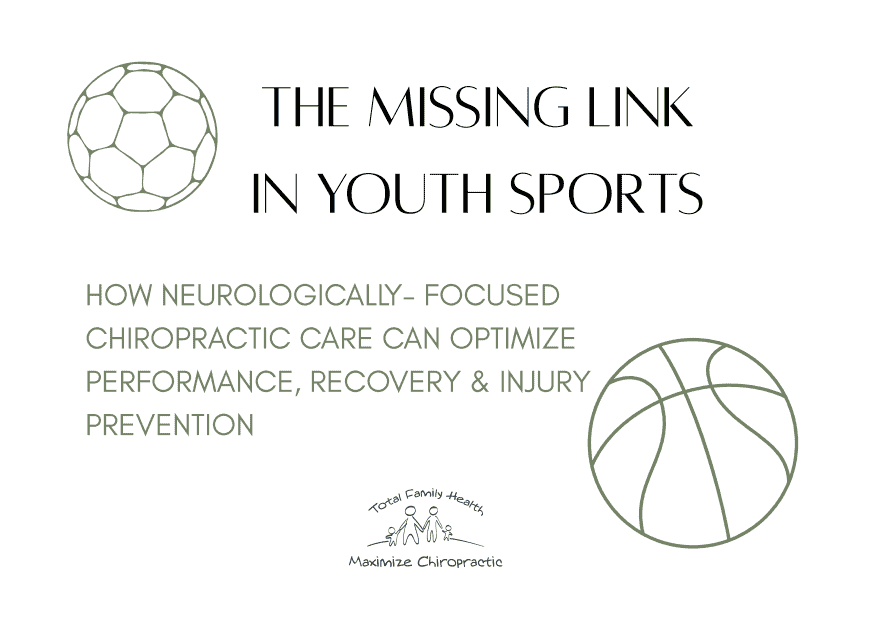Whether it’s the first season of peewee soccer or chasing a college scholarship on the track, one thing is true across all youth sports today — kids are training harder, competing more frequently, and facing more physical and mental stress than ever before.
But here’s what most parents, coaches, and even trainers are missing – true sports performance doesn’t start with the muscles. It starts with the nervous system.
While many coaches and trainers today are fully up to speed on the importance of things like stretching, yoga, and even functional nutrition for performance and recovery – most entirely overlook the reality that just like most adults, our kids are under so much stress that their nervous systems are the verge of burnout and shut down, which increases the risk of injury, limits performance, and stunts recovery.
Performance Begins in the Brain 🧠
When your child sprints down the field, launches off the balance beam, or steps into the batter’s box… the commands for those actions don’t come from their arms or legs. They come from the central nervous system, specifically the brain and spinal cord.
Speed, strength, balance, coordination, and reaction time — all are regulated by the neuromuscular communication loop between the brain and body.
That means even the most talented athlete can be “held back” if their nervous system is overloaded, stressed, or out of sync.
And that’s exactly where Neurologically-Focused Chiropractic Care comes in.
The Real Reason Young Athletes Struggle with Injury and Burnout
Most people only think about chiropractic care after an injury. A twisted ankle. A strained hamstring. A concussion recovery.
But that reactive approach misses the mark.
Through our clinical lens at PX Docs, we consistently see that the most common underlying reason young athletes struggle with injuries, burnout, and inconsistent performance is not a lack of effort or talent — it’s nervous system interference, dysregulation, and overall exhaustion.
This interference is called subluxation, and it occurs when stress on the body (like sports training, repetitive motion, emotional stress, toxins, and poor posture) creates neurological tension that disturbs the communication between brain and body.
And when that communication is even slightly off?
- Reaction time slows.
- Coordination falters.
- Muscles tighten and fatigue faster.
- Injuries happen more easily.
- Recovery takes longer.
Chiropractic for Performance, Not Just Pain
What makes Neurologically-Focused Chiropractic Care different from traditional chiropractic or physical therapy?
Instead of chasing symptoms like soreness or tightness, we use advanced nervous system scanning technology (like INSiGHT Scans) to find the exact areas of stress and interference that are limiting your child’s performance and increasing their risk of injury.
By restoring proper communication through specific, gentle adjustments, we can:
✅ Improve reaction time and neuromuscular coordination
✅ Enhance strength, posture, and balance
✅ Speed up recovery between workouts and games
✅ Reduce the likelihood of common sports injuries
✅ Help young athletes maintain energy and focus through the entire season
The Science Behind It: INSiGHT Scans, EMG & HRV 📊
One of the most powerful tools we use in Neurologically-Focused Chiropractic Care — especially when working with athletes — is the INSiGHT Scanning Technology. These non-invasive, radiation-free scans allow us to look deep into how the nervous system is functioning, not just how the body is feeling.
Here’s how two of the main scans help guide our care and improve performance:
1. Surface EMG (Electromyography) – The Muscle Performance Scan
This scan shows us how well the brain is communicating with the muscles along the spine and core. For athletes, this is crucial. Poor muscle coordination, compensation patterns, or asymmetries in firing can lead to:
- Decreased strength and explosive power
- Poor posture and spinal alignment
- Imbalanced movement and higher injury risk
We often find that even in athletes who appear strong and fit, the EMG reveals hidden tension patterns or neurological imbalances that are limiting performance and putting stress on the system.

2. HRV (Heart Rate Variability) – The Recovery + Resilience Scan
HRV is one of the most advanced metrics in performance recovery science. It measures how well your child’s nervous system can shift between stress and recovery modes — also known as sympathetic and parasympathetic balance.
A low or unstable HRV in young athletes can indicate:
- Inadequate recovery between workouts
- Chronic stress overload
- Increased risk for injury, burnout, or emotional dysregulation
Our goal with chiropractic care is to improve HRV by helping the nervous system regulate more efficiently — leading to better sleep, faster recovery, improved focus, and stronger immune function.

Every Great Athlete Tracks Their Metrics…
…so why not track the one system that runs them all?
INSiGHT Scans give us an objective way to measure the impact of care and ensure your child’s nervous system is trending in the right direction — toward optimal performance, resilience, and long-term health.
Recovery and Resilience: The Game-Changer 🏆
Let’s be real — today’s youth sports environment is intense.
Multiple practices per week. Weekend tournaments. Travel. Early specialization. Pressure to perform. Social stress. School stress.
It’s no wonder kids are burning out by 12 years old.
Neurologically-Focused Chiropractic Care helps build resilience in a young athlete’s system, especially by optimizing the vagus nerve and parasympathetic nervous system — which are essential for:
- Proper sleep
- Faster recovery
- Emotional regulation
- Immune support
- Injury healing
And unlike medications or ice baths, chiropractic care doesn’t just mask symptoms — it truly helps the body reset and repair at the root level.
Parents + Coaches — This Is Prevention at Its Best
If you’re a parent or coach looking to give your athlete every edge possible — not just in performance, but in long-term health — start by getting their nervous system checked.
You train their bodies. You fuel them with nutrition. You work on their mindset.
But if their nervous system is stuck in stress mode, they’ll never hit their full potential.
We’ve seen it time and time again in our PX Docs offices: The difference between a good athlete and a great one is often this invisible advantage — a fully connected, fully functioning nervous system.
Ready to give your athlete the winning edge?
Find a PX Doc near you and schedule a nervous system scan today.
🔎 Find Your Local PX Doc →

